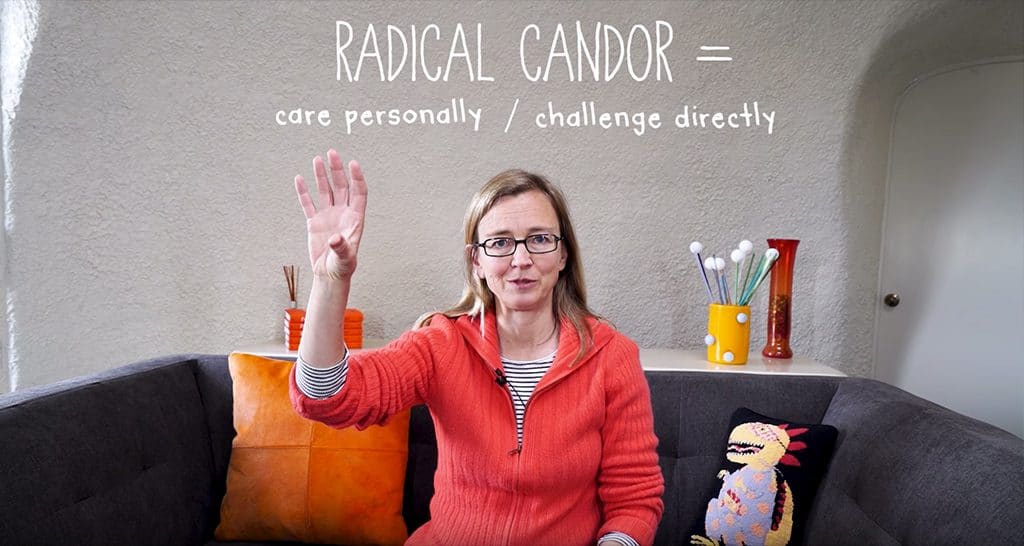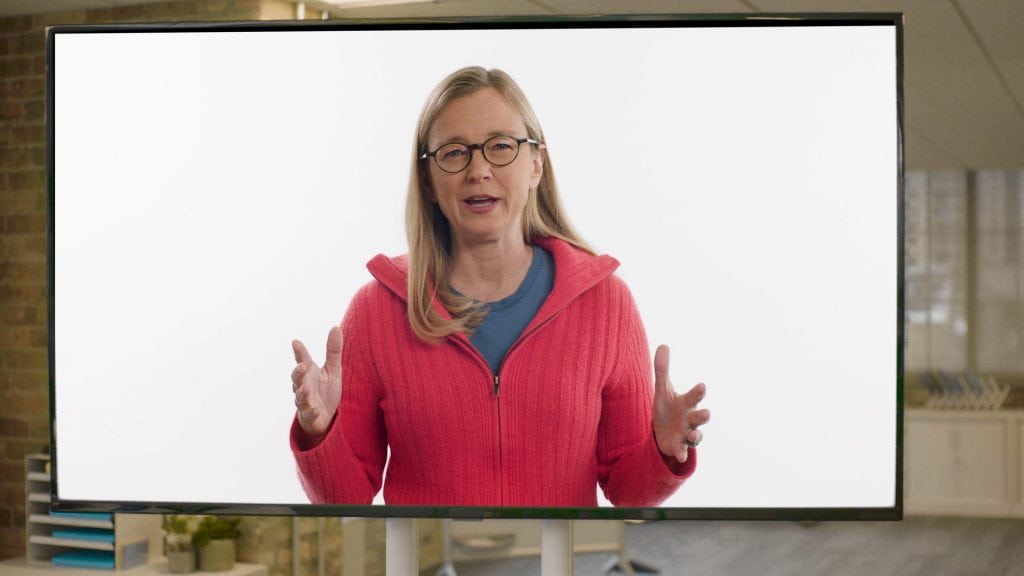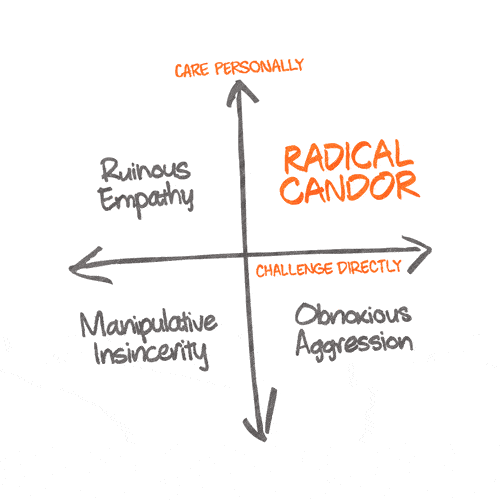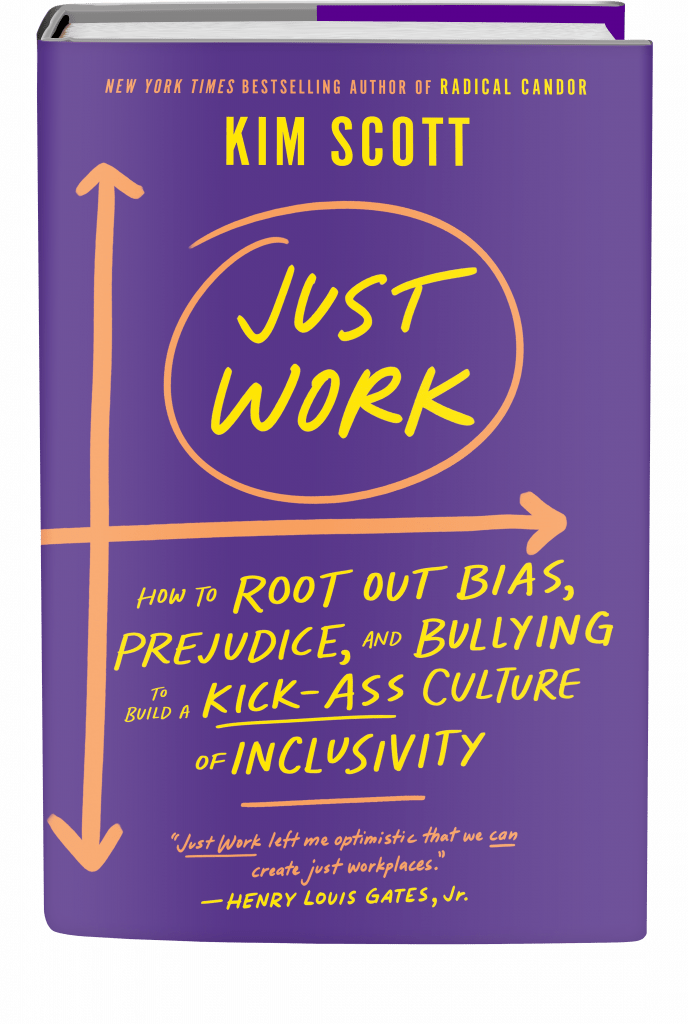By Gaurav Sharma, founder and CEO of Attrock, a results-driven digital marketing company he grew…
Why It’s Important for Leaders to Double Down On Radical Candor During Times of Uncertainty
*This post about how to apply Radical Candor in a crisis was originally written at the beginning of the pandemic. In the wake of recent mass layoffs at tech companies, this information about how to communicate during uncertainty is more relevant than ever so we’ve decided to elevate it with the intention of helping to guide people through communication challenges they may be experiencing at work. Let’s not forget everything we’ve learned over the past three years. Whether you’re navigating a global pandemic or a round of layoffs, let candor, compassion and action guide your communication.
Need help with Radical Candor? Let's talk!
I received a lot of questions about how to apply Radical Candor in a crisis. The pandemic has disrupted the workforce in ways we’ve never experienced before. Suddenly, millions of people used to working in offices are working from home.
In addition, tens of millions of people have been laid off or furloughed. People have asked me, in these situations, does Radical Candor still apply?
The answer is yes. In fact, the events of the last three years have made me double down on Radical Candor — not shy away from it.
In its most basic form, Radical Candor is a framework to facilitate communication that is kind, clear, specific and sincere. It’s about being able to Care Personally and Challenge Directly at the same time.
While this kind of communication is always important for building trust and maintaining relationships, it’s even more important during a crisis when anxieties are heightened and everything is uncertain.
Don’t Pretend Everything Is Business as Usual
Pretending that everything is business as usual when working during a crisis — like a pandemic or downsizing your workforce — will create more problems than it will solve. Whether you’re a manager, a coach or an individual contributor, be honest with yourself and others about what you’re capable of accomplishing and what you need to stop doing.
While this sounds easy and maybe even obvious, it’s much more difficult than it seems because it goes against basic human instincts.
There was a piece in Harvard Business Review that described What Good Leadership Looks Like During This Pandemic, from Michaela Kerrissey of the Harvard T.H. Chan School of Public Health and Amy Edmonson, author of The Fearless Organization and a professor at Harvard Business School who has introduced the idea of psychological safety.
It showcased a few examples of outstanding leadership, such as New Zealand Prime Minister Jacinda Ardern whose March 21, 2020 talk was described as “…clear, honest, and compassionate: It acknowledged the daily sacrifices to come and inspired people to forge ahead in bearing them together.”
The authors note that human instincts, combined with management training, tend to cause leaders to take the wrong actions in a crisis; for example, waiting for additional information versus acting with urgency or downplaying a threat and withholding bad news versus communicating with transparency.
When these human instincts take over, it’s easy to fall into two of the worst leadership styles — Ruinous Empathy and Manipulative Insincerity. It can also be tempting to avoid uncomfortable conversations and communicate information that will dramatically impact people’s lives via email or messaging apps.
Don’t do this. The people you’re communicating with are human beings with whom you have real human relationships. They deserve compassion and clarity that takes into account the real-world impact the news you’re delivering will have on their personal and professional lives.
What’s more, when you’re evasive and let digital tools do your work for you, you’re most certainly fostering a culture of anxiety and dread that will have a lingering effect on the entire organization.
When people feel that kind of fear, they start to avoid taking risks. They learn less, they grow less, they innovate less, they become less than they could be. This is the opposite of personal growth management.
Most people are perceptive enough to pick up on non-verbal cues, even in a remote environment. This means that what you’re not saying speaks 10 times louder than what you are. Don’t wait for the ever-elusive “more information” if it causes you to delay action that helps the people on your team.
If a member of your team asks you about the future of the company or whether their job is secure, and you don’t know the answer, don’t pretend you do. It’s OK to admit that you don’t have all the answers.
However, when you do have information that affects your team, commit to delivering it as soon as possible in a way that’s kind and clear.
When we were first ordered to shelter in place and all of Radical Candor’s speaking events — which account for 95% of our revenue — were canceled, my co-founder and CEO Jason Rosoff told the entire team on a video call where the company stood. He presented several scenarios with financial projections for each one.
A lack of information often leads people to assume the worst, including me. After Jason told us where the company stood, I realized we were in a much better position than I’d thought. Having this information also motivated everyone to work together to come up with creative ways to reinvent virtually what had been primarily an in-person business.
When leaders are transparent and authentic, their teams assume good intent, which means people won’t be working out of fear. And you can’t innovate or be creative when you’re working out of fear.
Don’t Default to Ruinous Empathy
I’ve received many questions about whether empathy is more important during a crisis. While it’s never wrong to move up on the Care Personally axis, doing so because you want to protect your employees from potential bad news is actually Ruinous Empathy, and it can cause harm.
Ruinous Empathy is “nice” but ultimately unhelpful or even damaging. It’s what happens when you care about someone personally, but fail to challenge them directly. It’s praise that isn’t specific enough to help the person understand what was good or criticism that is sugar-coated and unclear.
Ruinous Empathy is seeing somebody with their fly down, but, not wanting to embarrass them, saying nothing, with the result that 15 more people see them with their fly down — more embarrassing for them. So, not so “nice” after all.
Ruinous Empathy could be your not telling team members that the company is in trouble and they might lose their jobs. Or it’s not giving them feedback on their work because you’re worried it will stress them out.
It’s telling them they did a good job when their Zoom presentation was full of typos. Or it’s saying something like, “That presentation was fine, but do better next time.”
This kind of criticism doesn’t let the person know what they need to do better, which makes it impossible for them to improve.

Avoid Manipulative Insincerity
Being the boss is hard during the best of times, and it can be downright exhausting during a crisis. While it’s tempting to just check out and ignore problems, this kind of behavior can lead to what I call Manipulative Insincerity, which is what happens when you neither Care Personally nor Challenge Directly.
It’s praise that is non-specific and insincere or criticism that is neither clear nor kind.
People give praise and criticism that is manipulatively insincere when they are too focused on being liked or they think they can gain some sort of political advantage by being fake, or when they are too tired to care or argue anymore.
Perhaps you have a client or someone you manage who is late to every virtual meeting, but you just don’t feel like dealing with having a conversation with them so you stay silent. This is Manipulative Insincerity.
This kind of behavior doesn’t allow you to understand why this person is late, it doesn’t let them know their actions are hurting them at work, and therefore it guarantees the problems will persist endlessly versus getting solved in a two-minute conversation.
Manipulative Insincerity is the very worst way to respond to a crisis, although it’s also very human. We just kind of pull into our shell, turtle-like, and of course we all need to do that from time to time, we need a little bit of self-care — but we also need to remember as leaders and coaches the emotional labor involved in leading people through a crisis is part of our job.
While it’s true that we undervalue the emotional labor of being the boss, a crisis often highlights that not everyone who is a leader should be. This emotional labor is not just part of the job; it’s the key to being a good boss.
A 2018 study published in the Yonsei Medical Journal reported that the sustained stress of emotional labor can quickly lead to burnout, psychological distress, and depression. Now more than ever, it’s essential to find ways to manage that stress — to take care of yourself so you can lead your team through uncertainty. This means knowing what you need to stay centered and making sure you make time for it.
Radical Candor Builds Trust
I’ve certainly noticed some of the best examples of leadership and some of the worst examples of leadership during COVID-19. One of the best examples I saw recently was a leader who gave everybody on their team four-day weekend when we went into working from home and said, take Friday and take Monday and figure out how you’re going to rearrange your life and so that you can take care of whoever is at home with you and then also how you can still show up for work when possible.
This person also identified what work still needed to be done, but also identified work, and asked the team to identify work, they could just stop doing for this period in recognition of the fact that this situation puts a lot of burden on everybody. You can’t offer the same solution for everyone. People who are at home alone need different things than people who are at home with six kids who need to be educated.
On the other hand, I’ve been told about a leader who installed spyware basically on everybody’s computer so that they could see how long everyone was working every day. That, to put it mildly, is not helpful for morale.
At the very core of leadership is building trust. And Ryan Smith, who is the CEO of a company called Qualtrics, which some of you might know was one of the people who I coached, zeroed in on this very early in his tenure as CEO. And one of our first coaching sessions, he asked me, he said, “I’ve just hired this new team. How can I build trust quickly with that team so that we can get great things done?”
In my book, Radical Candor: Be a Kick-Ass Boss Without Losing Your Humanity, I explain how I responded to Ryan with a quote from economist John Stuart Mill. “The source of everything respectable and [human] either as an intellectual being or as a moral being, is that [their] errors are corrigible. [They are] capable of rectifying [their] mistakes by discussion and experience, not by experience alone. There must be discussions to show how experiences can be interpreted.”
Let’s think about what that means for your leadership and how you build trust as a leader or coach. Challenging others and encouraging them to challenge you helps build trusting relationships because it shows one, you care enough to point out both the things that aren’t going well and those that are, and two, that you are willing to admit when you’re wrong and then you’re committed to fixing mistakes that you or others have made.
But because challenging often involves disagreeing or saying no, this approach embraces conflict rather than avoiding it. So it’s so tempting in a crisis to avoid conflict, but resolving conflict — and resolving it quickly — is one of the things that we can do to build trust.
————————————————————————————————————————————————————————————–
*This post was updated Jan. 25. 2023
- Take the Radical Candor quiz >>
- Sign up for our Radical Candor email newsletter >>
- Listen to the Radical Candor podcast >>
- Shop the Radical Candor store >>
- Get Radical Candor coaching and consulting for your team >>
- Get Radical Candor coaching and consulting for your company >>
Need more help getting your team to practice giving helpful feedback to each other? Then you need The Feedback Loop (think Groundhog Day meets The Office), a 5-episode workplace comedy series starring David Alan Grier that brings to life Radical Candor’s simple framework for navigating candid conversations.
You’ll get an hour of hilarious content about a team whose feedback fails are costing them business; improv-inspired exercises to teach everyone the skills they need to work better together; and after-episode action plans you can put into practice immediately to up your helpful feedback EQ.
We’re offering Radical Candor readers 10% off the self-paced e-course. Follow this link and enter the promo code FEEDBACK at checkout.
Just Work is Available Everywhere Books Are Sold!
Order Kim’s new book, Just Work: How To Root Out Bias, Prejudice, and Bullying to Create a Kick-Ass Culture of Inclusivity, to learn how we can recognize, attack, and eliminate workplace injustice ― and transform our careers and organizations in the process.
We ― all of us ― consistently exclude, underestimate, and underutilize huge numbers of people in the workforce even as we include, overestimate, and promote others, often beyond their level of competence. Not only is this immoral and unjust, but it’s also bad for business. Just Work is the solution.
Just Work is Kim’s new book, revealing a practical framework for both respecting everyone’s individuality and collaborating effectively. This is the essential guide leaders and their employees need to create more just workplaces and establish new norms of collaboration and respect.






